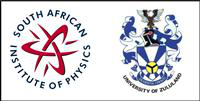Speaker
Main supervisor (name and email)<br>and his / her institution
Prof. P.J. Cilliers, pjcilliers@sansa.org.za
SANSA Space Science, Cape Peninsula University of Technology
Level for award<br> (Hons, MSc, <br> PhD)?
PHD
Would you like to <br> submit a short paper <br> for the Conference <br> Proceedings (Yes / No)?
Yes
Apply to be<br> considered for a student <br> award (Yes / No)?
Yes
Abstract content <br> (Max 300 words)
The implementation of two proposed techniques for measuring and modelling geomagnetically induced currents (GICs) in power lines are discussed in this paper. GICs are currents in grounded conductors driven by an electric field produced by time varying magnetic fields linked to magnetospheric-ionospheric currents during magnetic storms. These currents can cause overheating and permanent damage to high voltage transformers in power systems. Measurements of GICs are done on the neutral to ground connections of transformers in some substations. There is a need to know the magnitude and direction of the GICs flowing on the power lines connected to the transformers. Direct measurements of GICs on the lines are not feasible due to the low frequencies of these currents which make current measurements using current transformers (CTs) impractical. Two methods are proposed to study the characteristics of GICs in power lines. The differential magnetic measurement (DMM) technique is an indirect method to calculate the GICs flowing in the power line. With the DMM method, low frequency GIC current in the power line is estimated from the difference between magnetic recordings made directly underneath the power line and at some distance away, where the geomagnetic field is still approximately the same as under the power line. An analysis of the spectrum of GICs, of the DMM technique, and preliminary results are presented. Finite element (FE) modelling with COMSOL- Multiphysics is implemented so that the nature of the return currents flowing on the power lines and the Earth's surface can be analysed. In order to develop the FE model, historical geomagnetic data recorded at SANSA in Hermanus and realistic Earth conductivity values derived from the literature are used as the modelling inputs to the FE model.
Preliminary results of current density distributions obtained by means of FE modelling are also
presented.

